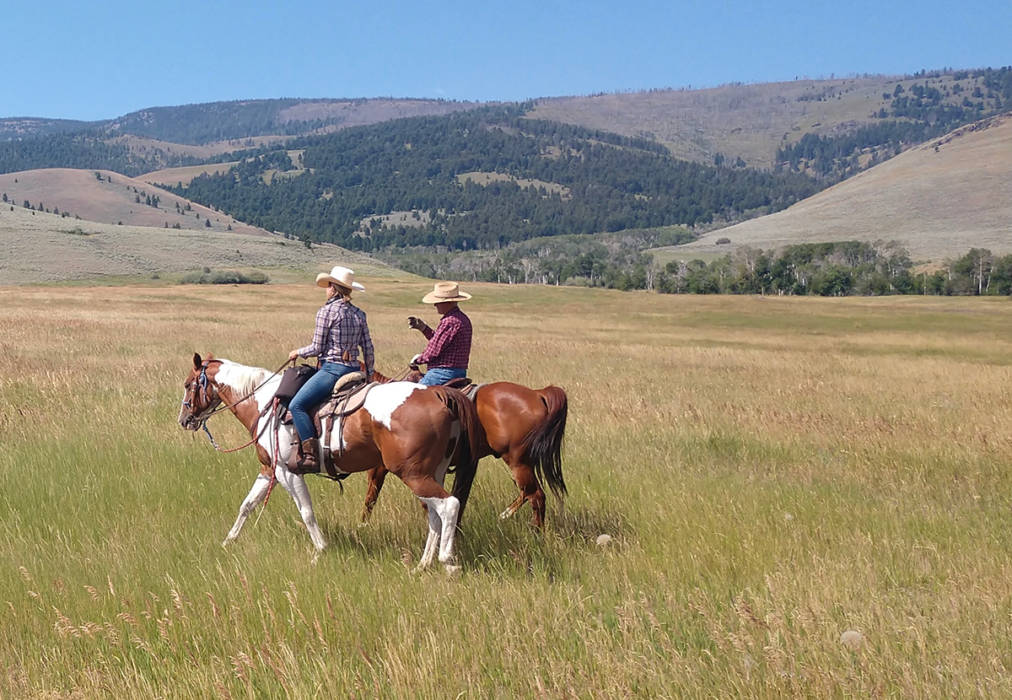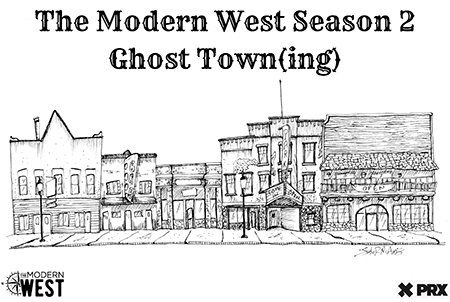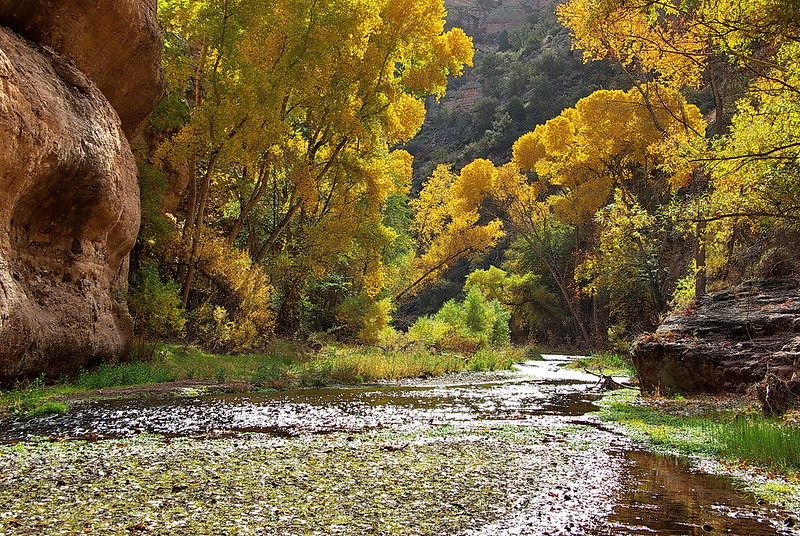
Americans have a tendency to discuss threatened species in black-and-white economic terms, and the greater sage-grouse is no exception to the norm. The birds once occupied about 290 million acres of the West’s sagebrush steppe, but farms, fires, suburbs, ranches, and energy plays have reduced their footprint by more than 40 percent. What habitat remains overlaps with quite a bit of cattle range and oil-and-gas development, so debate over the bird’s future has largely been framed as a battle between environmentalists trying to save the sagebrush sea, and capitalists trying to profit at the grouse’s expense.
But in her new podcast, Grouse, journalist Ashley Ahearn delivers some refreshing nuance that moves beyond the usual industry-versus-animals framework. From a biologist waxing poetic to an oil-and-gas executive talking about his love for the landscape, Ahearn introduces us to Westerners whose lives are intertwined with the bird’s, and does so in a fashion that goes well beyond the usual soundbites.
Grouse, which Ahearn made in collaboration with BirdNote and Boise State Public Radio, isn’t a joyous take on the bird’s prospects — Ahearn isn’t convinced we can save it from extinction. Instead, it’s a detailed examination of the forces affecting sage-grouse habitat, and how our responses to them can either exacerbate or minimize the region’s social divides.
I called up Ahearn recently to discuss the podcast. Our conversation has been edited for clarity and length.
Jake Bullinger: What threats do sage-grouse face, and why are the birds so controversial?
Ashley Ahearn: It’s not out of line to say that the sage-grouse is the spotted owl of the 21st century. The bird has come to symbolize so many of the divisions in the modern West: between urban and rural, conservative and liberal, between environmentalists and more land-based, extractive industries.
And so when we look at the threats to the sage-grouse, they cross all land uses. You have the oil and gas industry. You have ranchers who want to be grazing in areas where sage-grouse may be nesting, or lekking. You have more recreational activities, more ATVs, more roads going in, more development as people move to the country. And then you have drought and wildfire burning hundreds of thousands of acres of sage-grouse habitat, and the larger threat of climate change. The bird is at the nexus of a confluence of factors that are changing the West already.
This story first appeared in the Bitterroot Newsletter. Sign up below to get our dispatches direct to your inbox.
The podcast is, of course, about the sage-grouse, but you also mull over the social divides in the West and the state of journalism. You moved from Seattle to Washington’s Methow Valley before creating the podcast. How has that move, plus your reporting, changed the way you view the urban-rural divide?
I’ve always lived in cities, and reported for NPR at member stations around the country — from Boston, to D.C., to Los Angeles, to Seattle. So coastal and liberal, mainly. And when you cover the environment from a city, I think you’re only getting a small fraction of that story. The American West is covered oftentimes by journalists who parachute in to do a story, and I think I was part of that problem. As local papers die out, you don’t have many journalists in the communities that are closest to the land and the environmental questions we’re all asking right now about climate, drought, water, and other resources.
So when I moved to sagebrush country, it was in part burnout from the city and the rat race. It was also a deep awareness that I wasn’t getting the whole story. Take wildfire and forest management — that’s a resource story I look at differently now. I live in a valley where, up until this past summer, the largest wildfire in Washington state history destroyed more than 200,000 acres. Journalists move on after the flames are out, but living here and seeing the toll it takes on mental health and the economics of the area has changed my perspective. Wildfire almost burned my house last summer. You start thinking very differently about that threat when you live in it.
There’s a tendency, I think, among liberal, moneyed, elite environmentalists to have very strong opinions about what can and should be done on the land. That can ring hollow out here. One concrete example is when environmentalists talk about rotational grazing and how that will reduce impacts. Now that I’ve moved cows around, I’ve seen firsthand that rotational grazing is a shit-ton of work. It takes staff and time, and it takes horses and ATVs and money. This next-level management may very well be better for sagebrush and sage-grouse, but living out here, I see the costs and the feasibility of it in different way than when I lived in the city. I had more of a research-based, science-based — but not land-based — understanding of what things looked like out here.
You talked with a lot of folks who have different perspectives on sage-grouse. Was there any common ground that linked them?
If there is any common ground, it’s that people are coming to this with the best intentions. Having interviewed oil and gas executives, ranchers, and environmentalists — these are people who often refer to each other as fundamentalists or extremists. I can tell you that, after visiting with all of these folks, their hearts are in the right place, at least on the individual level. It’s when you get into the larger economic systems that drive oil-and-gas extraction or small-scale ranching that you see how common ground is elusive.
People are under so many different constraints, and oftentimes the environment or an obscure bird is the last thing on your mind. Their concerns about the bird are real, but then the constraints come in about what they’re able to do and how they can adapt. Whether it’s a rancher changing his grazing patterns, or the oil-and-gas guy changing how he drills, they’re looking at what they need to do to make a buck first, and then they’re trying to figure out how they can also help the birds.
Having had all these conversations, though, I can’t say in good faith we’re going to save this bird. I really can’t. I think the constraints are too big, the economic drivers too strong, to prioritize an obscure bird.
So what should people make of that? Most people, even those who live in sagebrush country, probably will never see a sage-grouse. So if it goes extinct, what does that mean?
I would point folks toward one of my favorite scientists I’ve ever interviewed. Michael Schroeder is a biologist for the Washington Department of Fish and Wildlife, and he’s been studying sage-grouse here for more than 30 years. Washington is the ghost of Christmas future for the sage-grouse — there are fewer than 1,000 of them left here — and this guy has been dedicated to these birds for his whole career. What he told me is that, if we lose this bird, it tells us more about ourselves than it does the bird. He presents it as a philosophical question, and looks at the symbolism of the bird for us as a species. And that is where I wanted to leave people, to decide how you prioritize your time, and what you choose to fight for.
There are plenty of folks who go out and put pieces of bright plastic on fences so sage-grouse don’t fly into them during the mating season. Or people who are replanting native grasses so that cheatgrass doesn’t take over the entire West — that’s a herculean effort. So there are little things we can do, but you don’t do them because you think it’s going to save the sage-grouse. Do them because it makes you feel better, and that you are morally doing something you feel is right. Michael Schroeder is living that, as dedicated as he is to studying the birds over the decades, even as their numbers continue to decline.
Yeah, Schroeder says at one point, if all we cared about was the economy, then people wouldn’t write poetry, or plant gardens. It’s eloquent talk from a scientist, but you don’t typically hear speech like that from the folks making decisions about how sage-grouse are managed — it often boils down to dollars and cents. How do you get logic like Schroeder’s into official discourse?
It’s really tough. I don’t think capitalism is set up for that sort of thinking or valuation of things, to be honest. And individual liberty is king in the rural West, and that bleeds into the politics out here. The philosophical virtues of nature for nature’s sake don’t jive with those individual liberties very well.
But I still found it, Jake. I found it talking with people like Merrill Beyeler, the rancher featured in episode four. I asked him if he valued sage-grouse over cows, and he paused and laughed, but then said, “I do. … You make the journey one time. And you don’t want to do something that ruins it for generations to come.”
That’s a philosophical statement not unlike the one Michael Schroeder made. You ascribe value to something, and then you work to save it. I love the opportunity to elevate a voice from a rural, conservative rancher who you wouldn’t expect to say something like that — and he certainly believes it.
What surprised you during your reporting?
There are a lot of things to lose hope about right now. Whether it’s the virus, or the divisions in this country coming up to the election, it’s really easy to feel completely lost and distraught. The final episode comes back to Washington state for the wildfires that happened over Labor Day weekend. The fires were burning in the area Michael Schroeder and I had visited [in episode two] to see sage-grouse. Going out again and standing on a scorched hill, and looking out on a place where I saw sage-grouse, you know, six months earlier is enough to make you cry, and it did. And it made Michael Schroeder cry. It’s a moment that I will never forget.
In those moments, though, there’s such great love. It’s easy to block that out and refuse to be vulnerable to anyone right now because we’re all in our own silos. The surprise, to me, was the freeing catharsis of being vulnerable and really caring about something. In a time when you can feel really jaded, the surprise was that it feels better to feel raw and vulnerable than to feel numb and safe.
From our sponsor

The Modern West podcast is exploring ghost towns past and present. In the newest episode, a stranger comes to town. When an ultra-wealthy businessman buys up Main Street, can a shrinking town be saved?
Worth a Read
Top stories from around the West
This woman has spent millions on oil and gas leases around the West in recent months. As The Salt Lake Tribune’s Brian Maffly writes, some argue her spending spree epitomizes everything that’s wrong with the Bureau of Land Management’s leasing process.
•••
Speaking of the BLM, its lawyers may have a chore on their hands: Many of the policies implemented under acting director William Perry Pendley could be invalidated because, well, Perry had no decision-making authority since he was never formally confirmed to lead the agency. Judy Fahys with InsideClimate News has the (very complicated) details.
•••
I can’t say it enough: Pay attention to Arizona during the election.
•••
I know home prices keep skyrocketing. I wrote about the reasons why. But it still blows my mind that this is happening during a pandemic. As a result, inequality will only widen in Western cities like Boise, where one real estate agent told the Idaho Statesman that the shortage of available units “creates a crisis.”
•••
Spend much time outdoors, and you’ll probably interact with a trail or structure created by the Depression-era Civilian Conservation Corps. Colorado Public Radio dives into the latest proposals to reinvent the program, which — as I’ve written — could put millions of people to work by tackling climate change.
Tell your friends about Bitterroot
Your Land
An ode the public lands we share

Share with a friend | Watch a cat video | View previous newsletters

